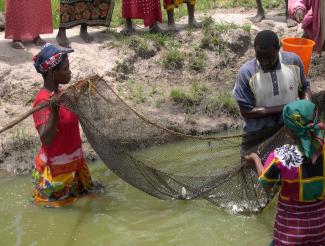Agriculture continues to be the mainstay of Mozambique’s economy, contributing more than a quarter of its GDP and employing 80 percent of its labor force. The overwhelming majority of producers are subsistence farmers. Chronic food insecurity is exacerbated by climate shocks and natural disasters such as floods, droughts and cyclones.
The country has vast potential to eventually become a major food producer in Southern Africa. Only 16 percent of land suitable for farming is currently cultivated, and its geographic location between landlocked countries to ocean ports raises its potential to play a role in regional food security and international markets. Improving agricultural productivity and ensuring access to food are now top priorities for the country's leaders.
Through Feed the Future, USAID helps thousands of vulnerable households improve their food security by adopting more productive agriculture technologies, improving nutrition and health, and connecting farmers to markets. The country is the second-largest, formal exporter of food in the southern Africa region and could progress toward a trade surplus if regulation and agricultural practices improve. Its strategic location and trade corridors make the country a key player in regional and global food security.
To achieve the most impact, we focus agriculture and nutrition efforts in Zambezia and Nampula provinces based on need, potential for impact, and opportunities to leverage other public and private investments. These provinces also contain or are adjacent to the country’s three main trade corridors. Together, the provinces are home to 44 percent of the country’s poor, 43 percent of stunted children under 5 years of age, and 51 percent of underweight children under 5 years of age (370,000). Investments will focus on oilseed, cashew and fruit value chains, due to the income and nutritional benefits they offer.

Suzanne Poland/USAID
